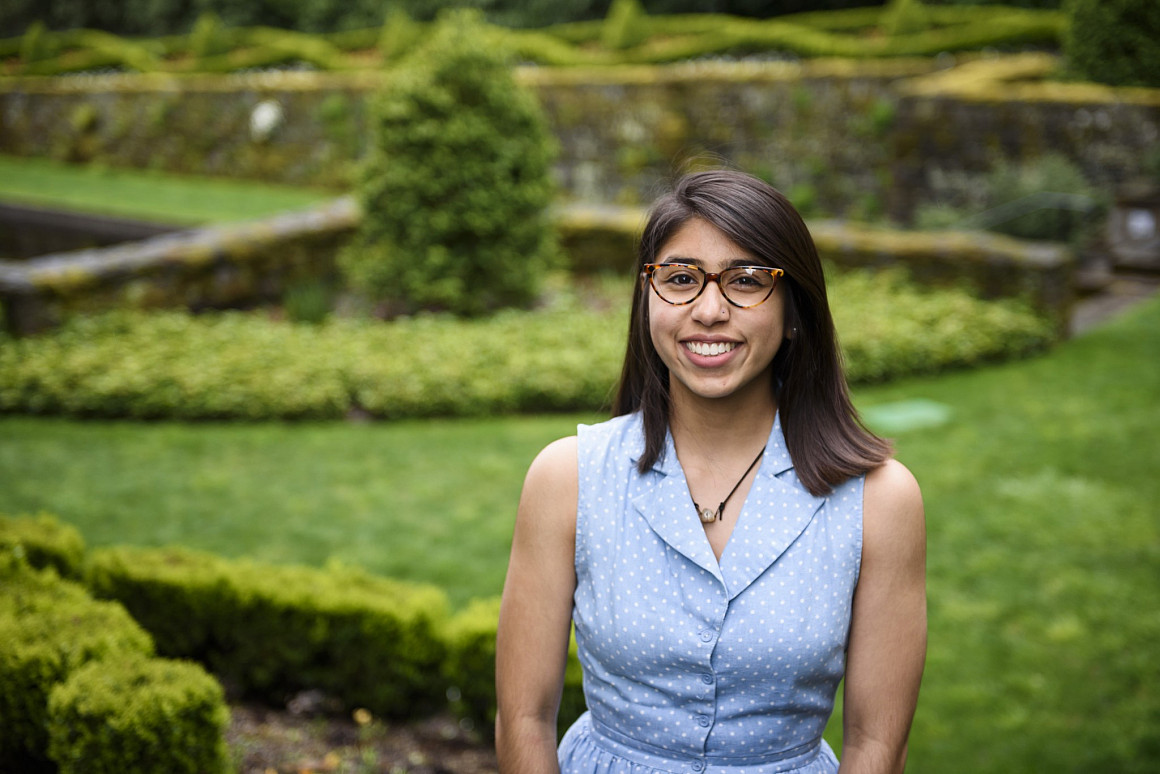Students Learn How to Tell Immersive Stories With Virtual Reality

This past spring, Lewis & Clark’s Office of Educational Technology sponsored a free workshop for students, staff, and faculty, titled “Virtual Reality: Immersive 360 Storytelling.” Participants were introduced to the mechanics of virtual reality technology, and learned how to plan, film, and edit their own visual productions.
The five-day workshop was cofacilitated by theatre alumnus Matt Ross BA ’17 and his brother Ben. Matt, who utilized virtual reality in his senior thesis video series “Retrospective,” returned to campus to promote the use of VR as a storytelling tool. Over the course of the workshop, participants took their individual projects from initial concepts to completed videos.
“The workshop definitely opened [VR] up for me. It was the first time I had the space to do something artistic, and it introduced me to all of these intersections between art and technology.”
Participant Sabrina Cerquera BA ’20 from Miami, Florida, was initially intrigued by the workshop’s emphasis on storytelling. A political science major and environmental studies minor, Cerquera is no stranger to technology—she worked at the IT desk in her first year—and has collaborated with friends on film projects in the past. But until she attended the workshop, she’d never thought of filming with virtual reality.
“There was definitely a learning curve, especially because I’d never done my own film before,” Cerquera said. “You have to get creative. But it was amazing to have access to this equipment, and to be in an atmosphere that supported me in learning how to use it.”
Cerquera’s short film, “A Day in the Life,” is in the form of a letter to a distant friend. The film follows Cerquera as she sits in class, cooks dinner, and goes to a concert, while a voiceover tells the story of her semester. While these scenes are simple, the addition of virtual reality makes filming them more complex: the VR camera films in a 360-degree arc, meaning that the person filming must always be aware of where they are in space, and—because the viewer can see in any direction at any time—every part of the scene has to be carefully considered.
“It was a marvel to see how teams adapted their former conceptual thinking to transform their video projects from traditional ‘flat’ video storytelling to the immersive 360 degree video environment,” said Justin Counts, educational technology specialist at Lewis & Clark’s IT Services. “We hope that all of our participants gained a critical understanding of the role that immersion, presence, and interactivity play in VR experiences, along with the confidence to effectively tell stories using this new medium.”
Cerquera plans to continue working on personal projects with VR through the summer, using the equipment available through the Information Technology service desk and its online reservation site, which is open to all members of the Lewis & Clark community.
“Before this workshop, I didn’t associate VR with storytelling,” Cerquera said. “The workshop definitely opened it up for me. It was the first time I had the space to do something artistic, and it introduced me to all of these intersections between art and technology. I feel like the workshop really helped me get involved with something that’s a growing community here in Portland, and I’m hoping to take advantage of that in the future.”
More Stories

Climate Justice
Uncovering the Hidden Toll of Natural Disasters
Rachel Young BA ’11 recently published groundbreaking research in the journal Nature on the long-term health impact of tropical cyclones. The article is part of her growing scholarship on the quantifiable social effects of climate change and natural hazards.

Photo Essay
Shaping the Future of Oregon’s Forests
L&C environmental studies students gained some real-world experience last month when they visited Tillamook Forest Center to attend the center’s annual Rain Festival, a celebration of the Tillamook Forest and its waterways. They spent the afternoon gathering input from rural community members on what they value most about Oregon’s forests.

Student Choreography
Dance X Highlights Student Creativity
Two semesters in the making, Dance X runs from December 5 to 7. The performances offer students the opportunity to have their original choreography fully staged for large audiences.

Sneaker Law
Stepping Into a New Era of Legal Education
Sports and entertainment attorney Nic Mayne teaches a new Sneaker Law course at Lewis & Clark Law School, providing hands-on contract drafting experience through the lens of the athletic footwear industry.
